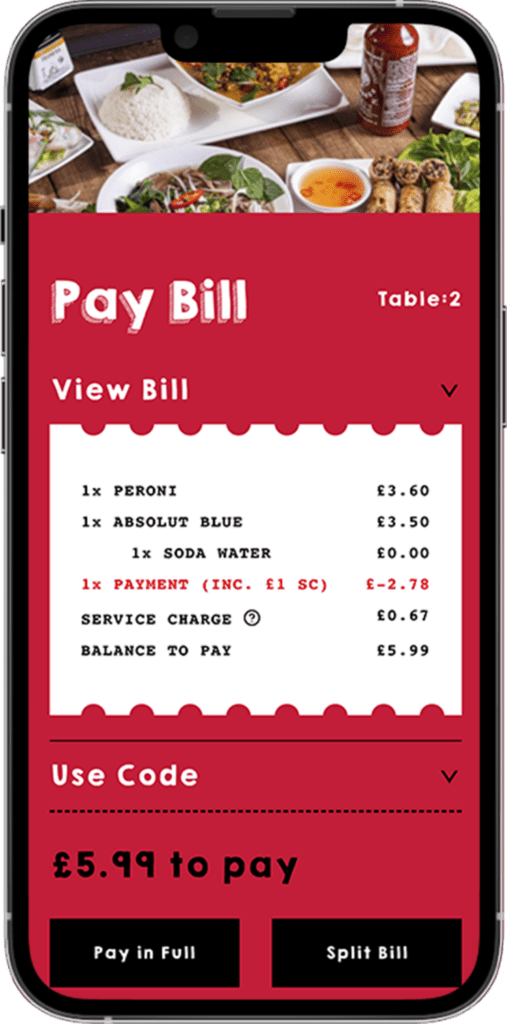Strategies To Leverage Customer Data From Your Digital Infrastructure
In our last article, we discussed building the e-commerce infrastructure of your dreams.
This time, let’s focus on how best to leverage customer data from that infrastructure.
This article will discuss the various types of data you can collect, why you should be collecting as much data as possible and the most effective way to capture high volumes of customer data.
All while maintaining a seamless guest experience.
Types of Data to Collect
Data is power, and having the right data in a single customer view is crucial to make it valuable and actionable. Here are the top 5 data pillars that enable you to target specific segments of your customer base:
1. Demographic data – this data type can inform you about who your customers are and help you know which segments of the population are more likely to dine out with you. This includes but is not limited to: age, gender, income, education, occupation & family size
2. Geographic data – this data type can inform you about where your customer comes from and allow for more localized targeting. This includes location, time to travel to the restaurant, local customers compared to a destination customers, and types of tourists.
3. Frequency data – this data type can inform you about how often customers visit your restaurant and when. This data can include how often someone visits, when they visit breakfast, lunch or dinner, new customers vs returning customers, loyalty-driven visits, and much more.
4. Transactional data – this data type can inform you about how customers spend their money at your restaurant. This can include basket level data (i.e. what customers are buying) which gives you insight into allergy types, and food type preference (e.g. vegetarian & pescatarian), repeat orders, actual spend value, low-spending customer vs. high-spending customer.
5. Engagement data – this data type can inform you about brand engagement. This includes social media engagement, email engagement, and website engagement.
6. Psychographic – this data type can inform you about customer motivations, beliefs, and preferences. This includes business customers vs. leisure customers, customer values such as ethics or sustainability, and their reason to visit, occasion driven, for example, birthdays or anniversaries.
Why do we need this data?
This data should feed into your CRM platform (a single customer view) so that you can understand who that customer is, when they dined and why they dined, what they ordered and what they thought of it.
Not only does this mean you can better anticipate the needs of the customer (becoming a more customer-centric brand), but you can also improve your segmentation and create more personalised customer journeys and comms which leads to higher engagement, customer retention and ultimately higher customer lifetime value.
Where to collect data during the customer journey
There are many touch points during the customer journey where you can gather rich data about your guest.
The question is, are you maximising every one of those data capture points, and are they feeding into your single customer view? In-store and online, there are several platforms you can use to capture data.
The below diagram outlines where you can collect data via your digital infrastructure, and what type of data each platform collects.

There are two specific types of Data that we’d like to highlight where we think there is a lot of opportunity to boost your rich data collection:
Order & Pay at Table
Collecting data from Order & Pay lets you collect transactional data. As customers use the system to place orders and make payments, the system can collect data on their orders, including the items they ordered, the time and date of the order, and the amount paid.
When added to a single customer view, the collected data can analyse various aspects of your business, such as sales trends, customer preferences, and behaviour. You can use this information to make informed decisions to create automated and personalised communications.

In-Venue Customer Wi-Fi Sign-Up
We asked the leading Wi-Fi provider in hospitality, Wireless Social, for their perspective in collecting customer data via in-store Wi-Fi.
“Having the right Guest Wi-Fi solution in your hospitality venues will allow you to continually collect huge volumes of new marketable data. We typically see a 70% opt-in rate across our customer base and our CRM partners report that on average, 50% or more of the data they receive comes from Wi-Fi logins, which is greater than any other single source.

The guest’s demographic, behavioural and trend data captured, are combined in order to build a picture, as part of a Single Customer View. As the data is shared real-time, it allows for tailored WiFi journeys and timely, automated SMS and email communications that are more relevant and appealing to the recipients.
Tracking the effectiveness of your campaigns and activity is vital to prove a true ROI. We can do this by plotting key dates on our timeline reports. For example, if you created new POS marketing materials such as an A-board, you can measure whether this had a positive effect on new and/or repeat visits.
And the final piece of the puzzle is Insights. Our clients can use our insights to shape and create more targeted strategies. Looking at Loyalty for example, at Wireless Social we see 25-35s as the least ‘loyal’ from a visit frequency point of view with average logins per user in the last quarter sitting at 1.63 compared with 1.84 for 56 and over. This is just one example of the metrics that can be used to generate valuable and actionable insights.
Owning Your Data
This data has to be owned by the brand rather than a third-party platform so it can be used to build a Single Customer View, as discussed earlier to deliver informed and wholly personal sales and marketing messages.
This, coupled with the continual use of the data to improve the customer experience, provides the ideal tools for customer retention and growth.
_________________________________________________________________________
Check back for Part III: Building E-Commerce Into Your Marketing Strategy
In the previous articles, we focused on building your dream e-commerce infrastructure, and then on what type of data you could gather.
Now that you have collected valuable, rich data, it’s time to build a strategy for driving revenue digitally and capitalising on all the new rich data you’ve collected.
Hit the link below to ensure you get our next article which includes a free integrated campaign template showing how e-commerce goes hand in hand with campaign planning.
Sign up on our website to get the latest articles released monthly.
_________________________________________________________________________









